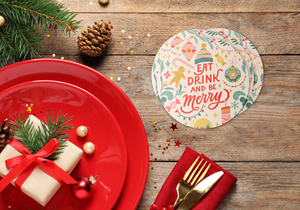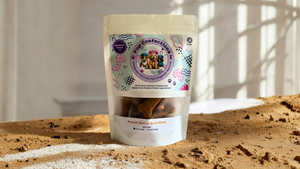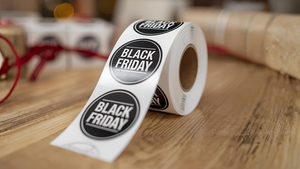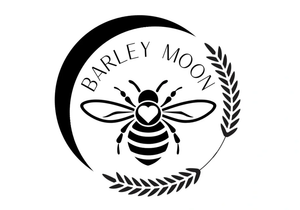How to Design Custom Vitamin Labels: A Complete Guide

Ever wondered what makes folks reach for one vitamin bottle over another? Spoiler alert: It’s not just about what’s inside — it’s the visual appeal of the label wrapped around it!
Consumers have plenty of options when it comes to vitamins, which is why a standout vitamin label design is crucial. Whether you're a startup dreaming big or an established brand looking to shake things up, your label acts as your silent salesperson, making that vital first impression on consumers.
There’s a lot to consider when creating custom vitamin labels, from FDA compliance to eye-catching design. Let’s break it down.
What Makes a Good Vitamin Label?
A good vitamin label does more than just stick to the bottle — it also communicates clearly with consumers. Effective labels convey important information like usage directions and ingredients in an easy-to-read format.
Visually, a good vitamin label resonates with your brand’s identity and the expectations of your customer base. Balancing aesthetic appeal with informational clarity is the key to a label that both captivates and informs.
Why Are Vitamin Labels Important?
Vitamin labels serve as a critical touchpoint for consumers. They provide essential information and help folks make informed choices about the products they use to support their health. Providing straightforward, easy-to-follow directions for use on the label ensures consumers can use your product correctly and safely, which is especially important for maintaining your brand’s integrity.
These labels also play a huge role in branding. They shape how consumers see your product and can greatly influence their buying decisions. In the competitive health and wellness arena, a well-crafted vitamin label can truly set your product apart, boosting visibility and building customer trust.

7 Tips for Designing Custom Vitamin Labels
Designing an effective vitamin label involves careful consideration of the container type, your branding elements, and the label’s shape.
1. Match Brand Identity With Label
Let your label reflect your brand's spirit. Whether you’re all about organic ingredients and eco-friendly vibes or futuristic, minimal aesthetics and cutting-edge science, your label design should instantly communicate these key selling points to your customers.
2. Include Brand Logo
Your logo is the cornerstone of your brand’s identity. Position it prominently on your label to boost brand recognition and reassure customers about the authenticity of your product.
3. Determine Vitamin Container
The type of container you choose for your vitamins is crucial to the design.
- Stand-Up Pouches: Ideal for powders or effervescent tablets, vitamin pouches need flexible labels that can conform to the shape without wrinkling.
- Tube Containers: Tubes offer a cylindrical surface that needs a wrap-around label. These containers are perfect for gummies or chewable tablets.
- Bottles: Bottles are the most popular vitamin containers for a reason. These versatile vessels can hold anything from tablets to powders to liquids. They can also accommodate a variety of label shapes and sizes, from simple rectangles to custom contours.
4. Determine Label Shape
The shape of your label should complement the container while maximizing space for design, allowing you to highlight key product information. Whether you opt for a traditional rectangle, a sleek oval, or an intricate custom shape, ensure it aligns with the overall product presentation.
5. Use Graphics Strategically
Images speak volumes about your product’s contents. Opt for high-quality, relevant images that reflect your product and target audience. For example, botanical illustrations may work wonders for herbal supplements, while bold graphics could be the ticket for sports nutrition products.
6. Leverage White Space
White space isn’t wasted space. It's a powerful design tool that helps prevent visual clutter, making your label more readable and aesthetically pleasing.
7. Make the Essential Info Clear
Display the most important info about your product front and center, making sure it’s crystal clear and easy to read. Your brand and product name and the vitamin’s key benefits should be immediately visible to provide a hassle-free customer experience. No one should have to squint to read a label!

What Are the FDA Requirements for Custom Vitamin Labels?
Navigating FDA regulations is critical for ensuring your products are compliant and safe for consumers. Here’s a snapshot of what your custom vitamin labels must include:
Statement of Identity
Your label should clearly state what the product is — whether that's a vitamin, supplement, mineral, or a combination of these. This statement is important because it helps consumers understand the nature of the product, guides their expectations, and ensures the product is correctly categorized within the FDA’s regulatory framework.
Net Quantity of Contents Statement
Your quantity of contents statement tells consumers how much product they’re purchasing. This statement should accurately reflect the quantity of the product in terms of weight, count, or volume. Make sure you display this info in a clear, unambiguous manner to avoid confusion and compliance issues.
Nutrition Labeling
Also known as a supplement facts panel, this section of your label has to include the names and quantities of dietary ingredients in your product, the serving size, and servings per container.
You also have to let consumers know what nutrients are in your vitamins. Specifically, your label must include total amounts of calories, calories from fat, total fat, saturated fat, cholesterol, sodium, total carbohydrate, dietary fiber, sugars, protein, vitamin A, vitamin C, calcium, and iron. Additionally, you have to declare any dietary ingredients that don’t have daily values (i.e., reference daily intakes or daily reference value) listed by their common names.

Ingredient List
Vitamin labels are required to feature a comprehensive ingredient list that includes every component in your product. In this context, “ingredient” refers to the compounds used in the manufacture of the vitamin. So, for example, when ascorbic acid is used to provide vitamin C, ascorbic acid is the ingredient, and vitamin C is the dietary ingredient.
It’s important to note that if your ingredients are included in your supplement facts panel, you do not have to list them again in your ingredients list. According to FDA regulations, ingredients must be listed in descending order based on their weight, ensuring that the most substantial ingredients appear first. Don’t forget to include spices or natural and artificial flavors used in your vitamins, as well as elements like binders, colors, fillers, and sweeteners on your label.
Manufacturer, Packer, or Distributor Details
To meet FDA standards, your vitamin labels must contain contact details. This includes the name and address of the manufacturer, packer, or distributor. This information is critical for accountability and provides consumers with a way to contact your company for more information or to report any issues. Providing these details enhances consumer confidence in your product's quality and your reliability. It’s a win-win!
Design Custom Vitamin Labels With Stomp
There’s a lot to consider when creating custom vitamin labels, from FDA compliance to the visual appearance of your design. Whether you’re launching a new product or revamping an existing line, Stomp is here to help. Our intuitive design tools empower you to tap into your creativity to design labels that capture the essence of your brand.
Ready to make your mark in the health and wellness industry with standout vitamin labels? Start designing your custom vitamin labels with Stomp.
- Nashira Edmiston






